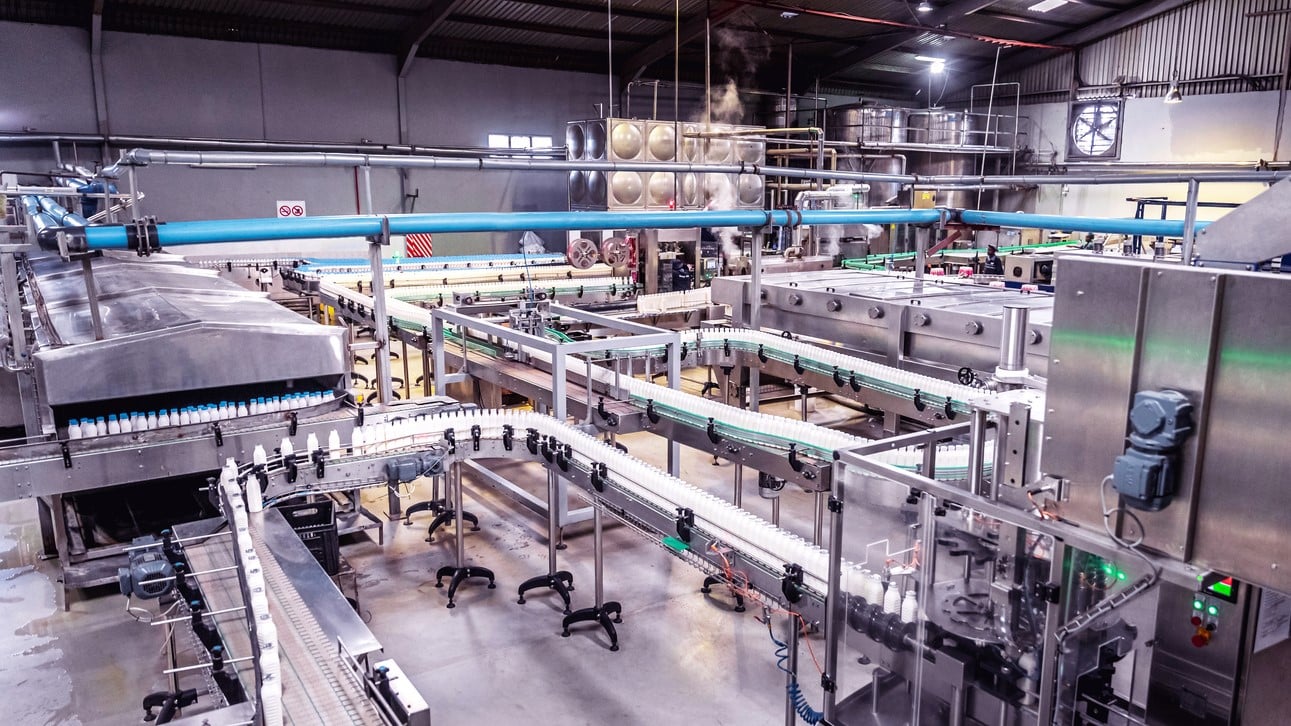The Most Common Contaminants in Food Manufacturing and How to Prevent Them
Public health depends on a safe and sanitary food supply, but a recent data analysis by Sedgwick found that undeclared allergen contamination, bacteria, and foreign objects was the leading cause of food and beverage product recalls in Q3 2023. In 2024, food contaminant control is critical for regaining public trust. Stakeholders need to ensure appropriate processes are followed in every operation to protect public health and product integrity while avoiding triggering recalls.
The challenge for these stakeholders is that contamination of food and beverage products comes from various sources, each with unique prevention measures and corrective actions. Here’s what you need to know about the different types of contamination and what to do about it.
The 5 Types of Food Contaminants and How to Prevent Them
Food contaminants are categorized according to their origin, and their potential impact on human health. The five most common food and beverage manufacturers need to manage are:
1. Chemical Contamination
Chemical contaminants generally consist of mechanical lubricants or cleaning solutions that accidentally come into contact with food and beverage products during production but can also include pesticide residues not removed from ingredients prior to processing. Mechanical lubricants from manufacturing equipment may leak onto food products due to equipment malfunctions while cleaning agents like detergents and sanitizers contaminate products if not adequately washed from surfaces.
Food Contaminant Control Measures:
- Conduct regular quality assurance checks of equipment conditions and perform equipment maintenance as needed to avoid mechanical failures that result in fluid leakage.
- Follow proper rinsing and washing procedures to ensure removal of detergents, sanitizers, and other cleaning agents.
- Verify that rinse water at the end of CIP and COP cleaning is free of chemical residue.
- Verify suppliers are following proper pesticide use protocols.
- Test ingredients for pesticide residue before they enter the processing environment.
2. Physical Contamination
Physical contaminants encompass foreign materials that intentionally enter food products from malicious adulteration and tampering or unintentionally during production. The foreign materials include plastic from packaging, metal fragments from manufacturing equipment, as well as wood, insects, pest droppings, or other organic materials from farms that haven't been sifted before processing. These contaminants can pose a range of health hazards if ingested, including choking, teeth damage, cuts to the lips, mouth, and digestive tract, and more.
Food Contaminant Control Measures:
- Screen products with X-ray machines, metal detectors, and other material detection equipment.
- Sift and filter ingredients prior to processing.
- Follow Good Manufacturing Practices (GMP) to avoid damage to packaging and production equipment that could result in physical contamination.
- Establish and follow a food defense plan to prevent intentional adulteration and tampering.
3. Microbial Contamination
Microbial contamination encompasses the spectrum of microorganisms, ranging from bacteria (such as Salmonella, E. coli, and Listeria) to viruses (such as norovirus and hepatitis A) to fungi and molds (that produce mycotoxins) in food and beverage products. Whether they originate from inadequately sanitized surfaces, the processing environment, or infected workers, they can cause foodborne illness outbreaks that injure consumers and destroy a brand’s reputation.
Food Contaminant Control Measures:
- Follow comprehensive sanitation protocols for equipment, surfaces, utensils, and workspaces to prevent cross-contamination and microbial growth.
- Provide thorough training to employees on proper hygiene practices, including illness reporting policies to prevent the spread of pathogens by infected workers.
- Conduct environmental monitoring for pathogens between the kill step and packaging and correct any positive results through enhanced sanitation efforts in the affected areas
- Test products for microbial contamination.
4. Allergenic Contamination
Allergens can contaminate food and beverage products during production, processing, handling, or storage with simple cross-contact between allergens and non-allergen containing food products. Allowing undeclared allergens into a product can cause potentially life-threatening reactions in sensitive individuals.
Food Contaminant Control Measures:
- Segregate food processing environments, utensils, and other materials used with allergenic ingredients when possible to ensure no cross-contact is possible.
- Properly sanitize the environment between production runs to avoid accidental cross-contact.
5. Environmental Contamination
Environmental contamination occurs when agricultural products and ingredients at farms are polluted with heavy metals, air, and water contaminants. These contaminants may originate from industrial activities, transportation emissions, agricultural practices, or natural sources and get absorbed by plants or animals, posing health risks to consumers who ingest them over time.
Food Contaminant Control Measures:
- Increase supply chain transparency to understand environmental contaminant risk factors and what suppliers do to mitigate those risks.
- Find alternate sources of ingredients when suppliers do not take proper precautions to prevent environmental contamination.
- Test ingredients for environmental contaminants before using them in food and beverage products.
Building a Food Contaminant Control Plan with Expert Support
Every contaminant represents a considerable risk to public health, the integrity of the food supply, and the reputation and financial well-being of every food and beverage manufacturer in the industry. Seeking guidance from knowledgeable third-party consultants and educators is critical to prevent contamination and train employees on proper protocols throughout the production cycle.
With over 100 years of experience in food safety, AIB International offers unmatched expertise on good manufacturing practices and risk mitigation. Learn how our Foreign Material Control Assessment, Microbiology and Food Safety, and Food Safety and Sanitation for Food Plants can empower your team.


